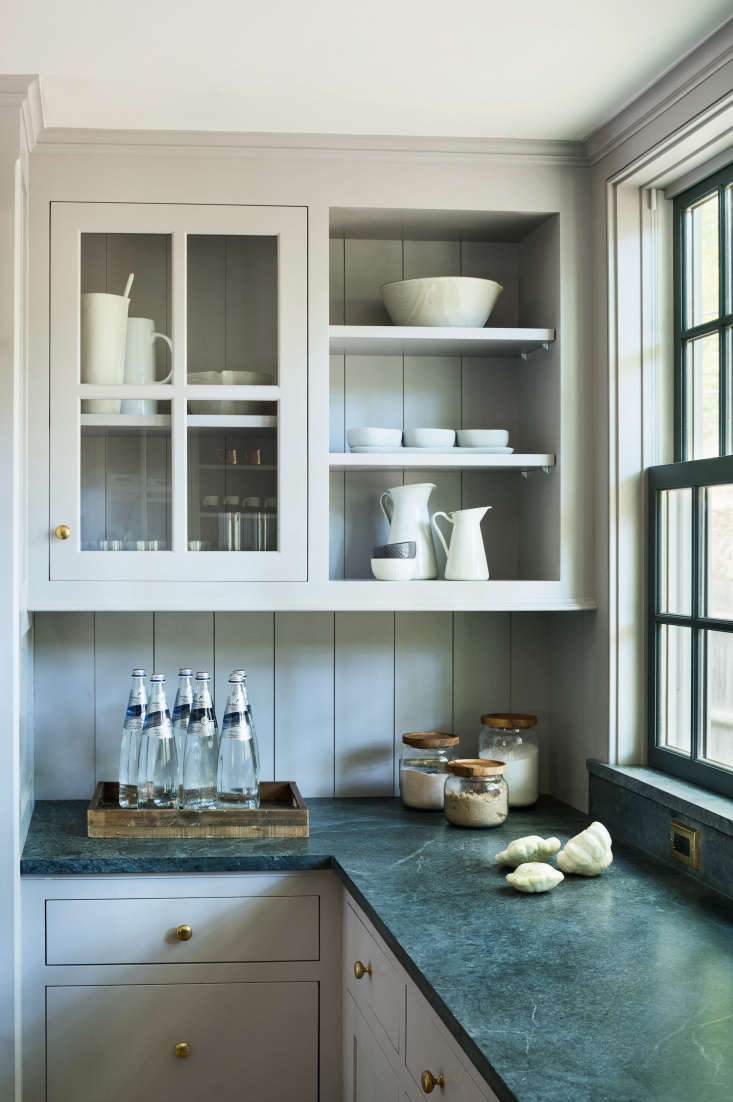Serving as both kitchen workhorse and showpiece, today’s countertops play a demanding role. Site of all food preparation, they’re expected to be durable (stain-proof, scratch-proof, and heat-proof), beautiful, and (best-case scenario) economical. No wonder choosing a countertop material is such a daunting decision.
But it needn’t be so tricky. Instead of getting seduced or intimidated by the endless options in the marketplace, begin by asking yourself the right questions and setting your priorities straight. As an architect who has survived and supervised several kitchen remodels, here’s my list of crucial questions you should ask yourself before you commit.
1. How will you use your countertops?
The most critical part of your countertop decision should come from an assessment of how you and your family use your kitchen. For example, I have two teenage boys and our countertops see a lot of daily active duty. Not only do we do a fair bit of family cooking but also my sons are always in the kitchen making “in-between” meals. And so it was important to me that our choice be able to withstand a variety of cooking and clean-up styles—without my having to be extra vigilant. I was less concerned about scratches and more concerned that my countertops being impervious to most food stains.

2. How much maintenance can you handle?
Many materials come with a long list of upkeep demands, while others are extremely resilient. Be realistic about how much effort you’re willing to put into the care of your countertops. For example, porous materials like marble, limestone, and granite need sealing at least once a year. My own wood countertops require that I apply Danish oil into them at least twice a year. Bottom line: Before falling in love with a material, fully assess the demands of living with it.

3. What are your kitchen requirements?
It’s extremely helpful to have an idea of how many linear feet of countertop you will need, as well as any required dimensions for your space that aren’t standard. This way, as you gather information, you can create your own ballpark figures for each material and make comparisons. For design and budgetary reasons, you might decide to use two different materials: For instance, if you have an island, it might be where you use an affordable wood top while the adjacent counters are in budget-devouring marble or granite.


4. What’s your budget?
Ranging from $22 per square foot for a basic plastic laminate to $250 per square foot for top-grade marble or granite, the cost of a kitchen countertop varies widely and also depends on your local suppliers and builders. But these basic guidelines can be misleading: High-end butcher’s block, for example, can cost significantly more than low-grade granite.
Bearing in mind that a good kitchen countertop, if maintained properly, will last indefinitely, it’s smarter to target your ideal material first and then try to find a version of it that fits your budget. It’s often reasonable to spend more (within reason) than you planned; after all, you’re going to be living with this decision daily for many years to come.

5. What materials speak to you?
For the design-obsessed, aesthetics can’t be ignored. It would, however, be a shame to select a countertop based on beauty alone, only to realize after it’s installed that it’s not the right match for you. Working out why you are drawn to certain materials over others will help you make your final choice with confidence. For instance, you might be attracted to white Carrara marble countertops but don’t want the hassles of worrying about red wine stains. An alternative white stone material such as Quartzite, durable, low-maintenance, and lower in cost, might be exactly the right choice. Or, if you decide it’s the warmth and personality of Carrara marble that you want, you’ll be prepared to put up with its shortcomings.


Bottom line: Treat your counter decision like any big investment. Take the time to look around, whittle down your options, count your pennies, and then make the leap.
For more specifics on countertop selections, consult our Remodeling 101 Guide: Kitchen Countertop Resource Guide and Remodeling 101: A Primer on Kitchen Countertops. Our, take a deep dives into each category:
- Remodeling 101: Butcher Block Countertops
- Remodeling 101: A Low-Maintenance Guide to Maintaining Soapstone Countertops
- Remodeling 101: Soapstone Countertops
- Remodeling 101: Soapstone Sinks
- Remodeling 101: Stainless Steel Countertops
- Remodeling 101: Marble Countertops
- Remodeling 101: The Difference Between Carrara, Calacatta, and Statuary Marble
- Remodeling 101: How to Care for Marble Countertops
- 10 Favorites: Architects’ Budget Kitchen Countertop Picks
- Remodeling 101: Concrete Countertops
- Remodeling 101: 7 Things To Know About Engineered Quartz Countertops
- Remodeling 101: Corian Countertops (and the New Corian Look-Alikes)
- Remodeling 101: Paper Composite Countertops for the Kitchen
N.B.: This post is an update; the original story ran on October 29, 2013.




Have a Question or Comment About This Post?
Join the conversation (23)